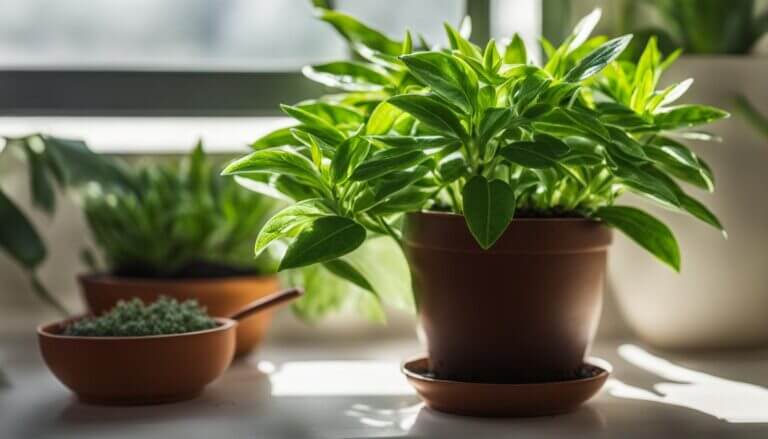Troubleshooting Common Christmas Cactus Problems: Wrinkled Leaves, No Flowers, Etc.
Christmas cacti, like the popular Christmas cactus (Schlumbergera x buckleyi) and Thanksgiving cactus (Schlumbergera truncata), can encounter various issues that affect their health and blooming. One common problem is when the stem segments become wrinkled, limp, or shriveled. This can be caused by either lack of water or too much water. If the soil is too dry, it is essential to water the plant thoroughly and ensure even moisture. On the other hand, if the soil remains wet, it may be due to root rot caused by overwatering or mineral salt buildup. In such cases, repotting the cactus in well-draining soil can help save the plant. Additionally, common pests like aphids and thrips can infest Christmas cacti, leading to leaf damage and poor flowering. Taking preventive measures and properly caring for the cactus can help troubleshoot and resolve these common problems.
Key Takeaways:
- Wrinkled or limp stem segments on a Christmas cactus can be caused by either lack of water or overwatering.
- Ensure even moisture by thoroughly watering the plant if the soil is too dry, or repotting in well-draining soil if the soil remains wet.
- Common pests like aphids and thrips can infest Christmas cacti, leading to leaf damage and poor flowering.
- Preventive measures and proper care can help troubleshoot and resolve common Christmas cactus problems.
- Regular monitoring and prompt action are key to keeping Christmas cacti healthy and pest-free.
How to Water a Christmas Cactus Correctly
Proper watering is crucial for maintaining the health of a Christmas cactus. These plants prefer even moisture throughout the year. When the soil is dry to the touch, it’s time to water the cactus. However, it’s important to avoid overwatering or underwatering. If the soil is too dry, a deep, thorough watering is necessary to moisten the entire root ball. Sometimes, if the soil is extremely dry, it may repel water, and soaking the root ball in a sink or pail of tepid water for 10 to 15 minutes can help rehydrate the soil. On the other hand, if the soil remains wet, it indicates a potential problem such as root rot. In this case, it’s crucial to ensure proper drainage and allow the soil to dry before watering again. Monitoring the soil moisture and adjusting the watering frequency based on the plant’s needs is key to preventing issues related to water.
Watering Methods
There are a few different methods you can use to water your Christmas cactus effectively:
- Bottom watering: Place the pot in a dish filled with water and allow the plant to soak up water through the drainage holes in the bottom. This method ensures that the roots are thoroughly moistened without excessive moisture on the leaves.
- Top watering: Pour water evenly over the soil until it starts to drain out of the bottom of the pot. Be sure to water the entire root ball, not just the surface. Avoid getting water on the leaves to prevent the risk of rot or fungal diseases.
Using a Moisture Meter
If you want a more accurate way to determine when to water your Christmas cactus, you can use a moisture meter. This handy tool measures the moisture content of the soil, giving you a clear indication of when it’s time to water. Insert the probe into the soil at various points around the root ball and check the moisture reading. If the soil is dry, it’s time to water; if it’s still moist, wait a little longer before watering again. A moisture meter can help you avoid both overwatering and underwatering, ensuring optimal care for your Christmas cactus.
Common Christmas Cactus Pests and How to Control Them
Christmas cacti are not immune to the presence of common pests that can affect their health and blooming. Two of the most common pests that can infest Christmas cacti are aphids and thrips. These tiny insects can cause damage to the leaves and negatively impact the overall appearance and vitality of the plant. It is important to take proactive measures to control these pests and prevent them from spreading to other plants in your collection.
One effective method for pest control is organic pest control. Organic pesticides, such as neem oil and insecticidal soap, can be used to effectively control aphids and thrips. These products are safe for the plant and the environment, making them a preferred choice for many gardeners. When applying organic pesticides, it is important to follow the instructions carefully to avoid any potential harm to the plant.
Another important step in controlling pests is to regularly inspect your Christmas cactus for any signs of infestation. Early detection is key to preventing the pests from spreading and causing further damage. If you notice any signs of pests, such as tiny insects or distorted leaves, it is important to take action immediately to prevent the pests from multiplying.
Preventive measures
Along with regular inspection and organic pest control, there are several preventive measures you can take to minimize the risk of pest infestation. One important step is to isolate any plants that show signs of pests to prevent the insects from spreading to other plants. Additionally, maintaining good hygiene is crucial in preventing pests. Keep the area around your Christmas cactus clean and free from debris that can attract pests.
By implementing these preventive measures and taking prompt action to control any infestations, you can ensure that your Christmas cactus remains healthy, vibrant, and pest-free.
| Pest | Description | Control Methods |
|---|---|---|
| Aphids | Tiny, soft-bodied insects that can be green, black, brown, or red. They feed on sap and can cause wilting, yellowing, and distorted leaves. | -Apply neem oil or insecticidal soap -Regularly inspect and isolate infested plants -Maintain good hygiene to prevent infestations |
| Thrips | Small, slender insects that feed on plant sap and can cause silver or bronze discoloration on leaves. They may also leave black specks of excrement behind. | -Apply neem oil or insecticidal soap -Regularly inspect and isolate infested plants -Maintain good hygiene to prevent infestations |
Repotting and Refreshing Christmas Cactus Soil
Repotting a Christmas cactus is an important step in ensuring its long-term health and vitality. If you notice signs of root damage or if the soil has become compacted or retains too much moisture, it’s time to repot your cactus.
When repotting, it’s crucial to choose a well-draining soil mix that will prevent waterlogged conditions and root rot. Opt for a cactus soil or orchid mix, as they provide the necessary drainage for a healthy Christmas cactus.
If your cactus has lost some roots, consider repotting it into a slightly smaller pot. This will encourage the growth of new roots and help your cactus thrive.
After repotting, it’s important to water the cactus properly. Begin by thoroughly moistening the soil right after repotting, and then water the plant modestly in the following months, only when the soil is dry to the touch. This will give your cactus time to adjust to its new environment and promote healthy growth.
FAQ
What bugs can infest a Christmas cactus?
Spider mites and other bugs can infest a Christmas cactus. If you notice yellowish or wrinkled leaves, it might be due to a bug infestation.
How does salt buildup affect a Christmas cactus?
Salt buildup in the soil can cause problems for a Christmas cactus. It can lead to nutrient imbalances and may cause the leaves to wrinkle or turn yellowish.
How often should I fertilize my Christmas cactus?
You should fertilize your Christmas cactus during its active growth period in summer. Use a balanced houseplant fertilizer and follow the package instructions to avoid salt buildup.
What is the role of an affiliate in Christmas cactus care?
In the context of Christmas cactus care, an affiliate could refer to a person or organization that provides advice or products to help you keep the plant healthy.
Why are the leaves on my Christmas cactus wrinkled?
Wrinkled leaves on a Christmas cactus may be a sign of inadequate watering or a bug infestation. It’s important to keep the plant in indirect sunlight and water it when the top inch of soil is dry.
Why is my Christmas cactus not flowering?
A Christmas cactus may not flower for several reasons. It could be due to inadequate light, too much fertilizer, or incorrect temperatures. The plant needs cool temperatures and long nights to trigger blooming.
How do I treat a Christmas cactus with a fungus?
If your Christmas cactus has a fungus, isolate the plant to prevent the fungus from spreading. Remove the affected parts of the plant and treat it with a fungicide. Make sure to keep the plant in a well-ventilated area.
How do I repot a Christmas cactus?
To repot a Christmas cactus, carefully remove the plant from its current pot and gently shake off the old soil from the roots. Place the plant in a new pot with fresh potting soil and water it thoroughly.







